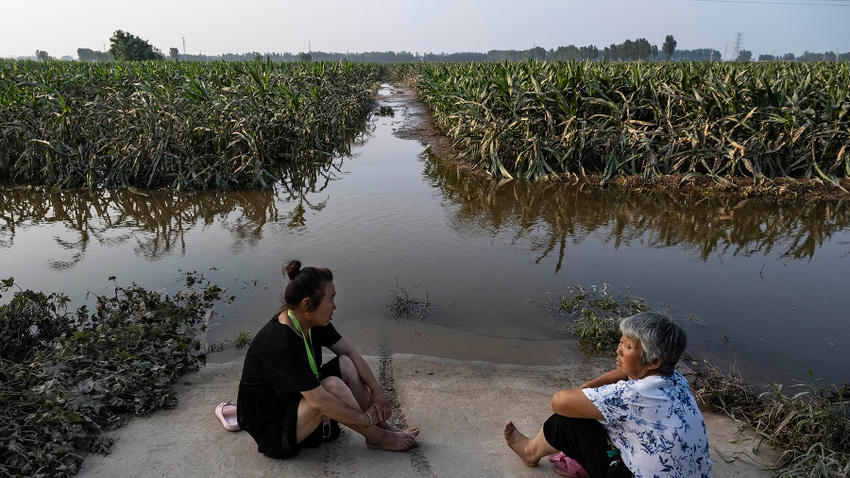
Price equilibrium is when the quantity of goods supplied by producers equals the quantity demanded by consumers. Changes in price occur when supply, demand [or both] shift or move.
What does that mean for grain farmers?
For the past few days, the trade's attention has been focused on the supply side of the equation as crop scouts across the country enter fields to get a handle on the size of this year's corn and soybean crop. The late-season record-setting heat and ongoing drought we are experiencing this week will only add to the challenge of determining the crop size.
History suggests this late-season stress will take bushels off the crop, but it may take until harvest to know how much.
The demand side of the spectrum is also in flux. Export demand has been rather lackluster for new crop soybeans, corn and wheat. New crop corn year-to-date sales commitments total 263 million bushels, down 24% from last year and the lowest since 2019. New crop soybean export commitments total 389 million bushels, down 38% from a year ago. Year-to-date wheat export commitments total 249 million bushels, down 23% from a year ago.
Global weather threats
There are weather issues in the biggest consuming countries in the world, which could allow for a potential reversal in fortune for demand bulls. China has recently experienced severe flooding in its northern grain-producing regions. This has damaged both the corn and rice crops. Estimates are that between 4-5 million tons, or roughly 2% of the corn crop, has been affected by floods. Estimates are that rice production could be down between 3%-5% in the affected areas.
The latest USDA report has China corn imports at an all-time high of 23 million metric tons for the 23/24 year. This number could increase if losses are higher than currently expected. China is historically self-sufficient in rice production and the curbed losses are not expected to be severe enough to change that at this time.
India, on the other hand, is having its own supply issues. In late July, the Indian government said it was banning exports of non-basmati white rice after retail rice prices raced higher due to production shortfalls. India accounts for more than 40% of world rice exports. It’s reported that India is currently negotiating with Russia to import up to 9 million metric tons of wheat to drive down surging prices due to production shortfalls.
India has historically been self-sufficient and doesn't import wheat. The last time India imported a significant amount of wheat was in 2017, when private traders shipped 5.3 million metric tons. With world wheat exporting countries' stocks-to-use at ten-year lows, these India purchases will only tighten the situation and potentially open the door for U.S. wheat exports.
The U.S. is missing out on exports due to competition from South America, which was selling both soybeans and corn at a discount to the U.S. We should see export sales increasing due to dropping grain prices [making the U.S. more competitively priced], and harvest approaching.
A 40% drop in grain production from Ukraine from pre-war levels combined with the uncertainty of the availability of exports out of Ukraine due to the ending of the grain corridor may also provide export opportunities for the U.S. as well.
What it means to you
Price movement over the next few months will determine where supply and demand balance out. Supply wise, if the crop ends up bigger than the current thought and demand doesn't increase, prices will need to move lower to stimulate demand. If the crop ends up being smaller than the current estimate, but demand is overstated, prices may still work lower. If the crop ends up smaller than anticipated and demand is better than expected, we expect prices to work higher.
If you have questions or would like specific recommendations for your operations, don't hesitate to contact me directly at 815-665-0461 or anyone on the AgMarket.Net team at 844-4AGMRKT.
The risk of loss in trading futures and/or options is substantial and each investor and/or trader must consider whether this is a suitable investment. AgMarket.Net is the Farm Division of John Stewart and Associates (JSA) based out of St Joe, MO and all futures and options trades are cleared through ADMIS in Chicago IL. This material has been prepared by an agent of JSA or a third party and is, or is in the nature of, a solicitation. By accepting this communication, you agree that you are an experienced user of the futures markets, capable of making independent trading decisions, and agree that you are not, and will not, rely solely on this communication in making trading decisions. Past performance, whether actual or indicated by simulated historical tests of strategies, is not indicative of future results. Trading information and advice is based on information taken from 3rd party sources that are believed to be reliable. We do not guarantee that such information is accurate or complete and it should not be relied upon as such. Trading advice reflects our good faith judgment at a specific time and is subject to change without notice. There is no guarantee that the advice we give will result in profitable trades. The services provided by JSA may not be available in all jurisdictions. It is possible that the country in which you are a resident prohibits us from opening and maintaining an account for you.
The opinions of the author are not necessarily those of Farm Futures or Farm Progress.
About the Author(s)
You May Also Like






